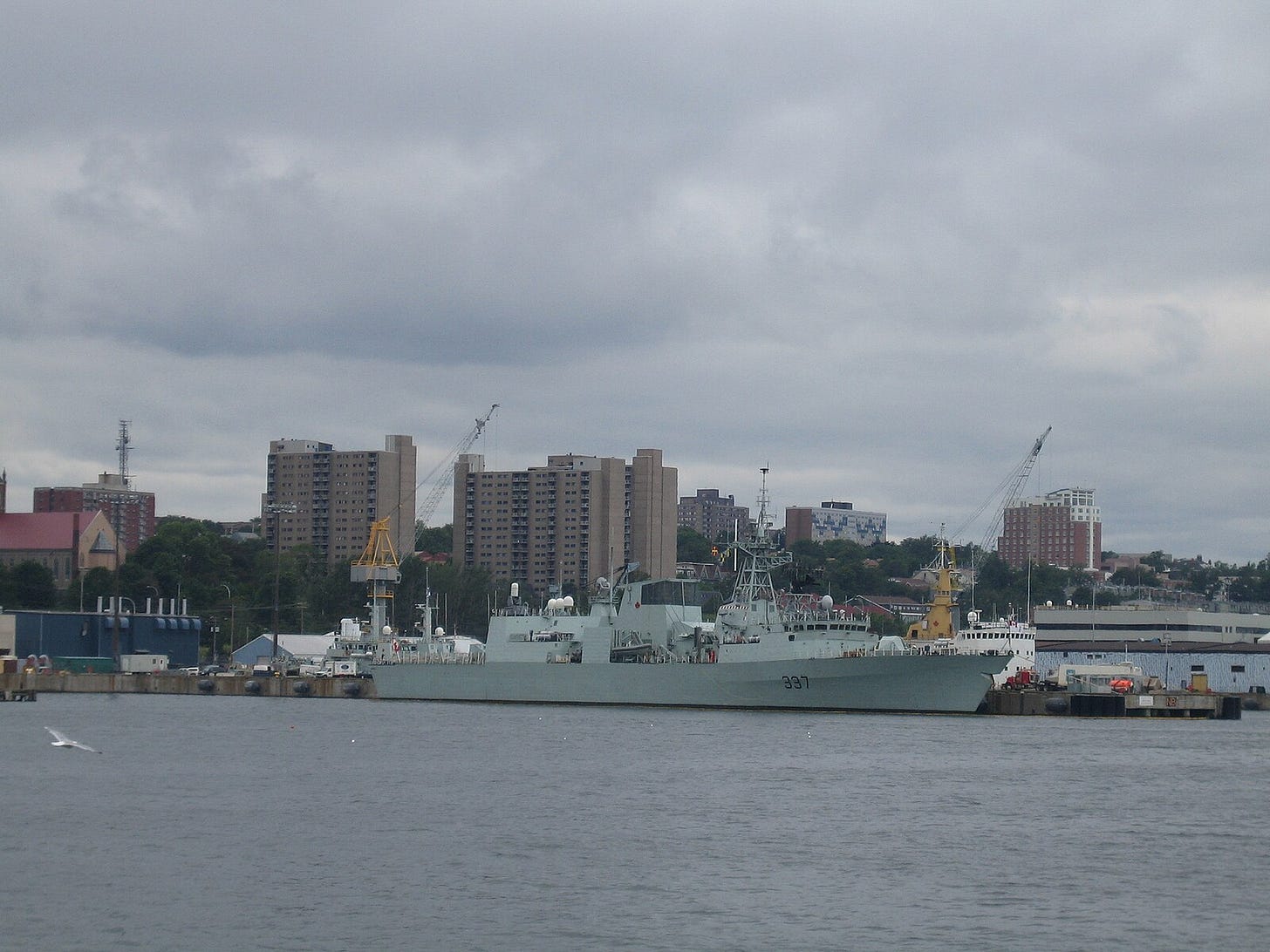Should Canada Have Nuclear Submarines?
Why the push for nuclear submarines could overwhelm Canada's Navy and derail its defence priorities.
The debate over whether Canada should develop a fleet of nuclear-powered submarines is a subject of intense discussion within military circles and public discourse. On the surface, nuclear submarines appear to offer unparalleled capabilities—extended underwater endurance, global reach, and superior speed—appealing qualities for any modern navy. However, for Canada, the question of pursuing nuclear submarines is far more complex. It touches not only on military capability but also on strategic alignment, personnel limitations, infrastructure costs, and long-term sustainability. Beneath the allure of nuclear-powered vessels lies a set of challenges that, for many experts, render this option impractical for Canada’s current and future defence needs.
Personnel and Expertise: A Steep Learning Curve
The first and most pressing issue in the debate over nuclear submarines is the human element. Crewing a fleet of nuclear-powered submarines requires a substantial expansion of Canada’s naval personnel. At present, Canada’s Royal Canadian Navy (RCN) is struggling to maintain its workforce. Recruiting new sailors, let alone highly specialized submariners, has proven difficult, reflecting broader demographic trends in the country and challenges in attracting individuals to military service.
Nuclear-powered submarines, by their very nature, require more personnel than conventional diesel-electric submarines. Whereas Canada’s current Victoria-class submarines are operated by crews of around 48, nuclear submarines require anywhere from 100 to 130 personnel due to the complexity of operating the nuclear reactor and the additional systems involved. Furthermore, the personnel required to operate nuclear submarines must have advanced training in nuclear engineering and reactor operations, skills that Canada does not currently cultivate on a large scale.
Training a new generation of submariners capable of managing nuclear-powered vessels would require years of investment. Beyond the initial education and training period, continuous retraining would be necessary to keep pace with evolving nuclear technology and operational demands. This would place a significant strain on the already stretched human resources of the RCN.
Canada’s Submarine Procurement Project: Strategic Reboot and Geopolitical Ripple Effects
Moreover, Canada’s military is not alone in facing personnel shortages. Many of the allied navies with which Canada would partner for training and operational experience—such as the U.S. Navy and the Royal Navy—are themselves grappling with recruitment challenges. For instance, the U.S. Navy has struggled to maintain sufficient numbers of trained personnel for its growing fleet of nuclear-powered submarines under the AUKUS (Australia-United Kingdom-United States) pact. This further complicates the picture, as Canada would have limited external support in developing its nuclear submarine expertise.
The Infrastructure Deficit: Building from Scratch
The second major hurdle is infrastructure. Canada’s current naval bases, such as Esquimalt on the west coast and Halifax on the east coast, are equipped to service conventional submarines. However, operating nuclear submarines demands entirely new infrastructure, including specialized docking facilities, nuclear refuelling stations, and highly secure storage areas for handling nuclear material.

This infrastructure does not exist in Canada today. Establishing nuclear support facilities would require significant investment, with costs running into billions of dollars. For example, the construction of new dry docks capable of accommodating nuclear-powered vessels would be essential. Additionally, safety and environmental regulations concerning nuclear materials are stringent, meaning Canada would need to create an entirely new regulatory framework and oversight mechanism to manage the risks associated with nuclear propulsion.
Consider Australia’s current struggle under the AUKUS agreement. Australia, despite being one of the world’s wealthiest nations, has found itself grappling with the immense costs of setting up the necessary infrastructure to support its future fleet of nuclear-powered submarines. The Royal Australian Navy is facing delays and cost overruns, as establishing the necessary port facilities and training institutions is far more challenging and time-consuming than originally anticipated. If a similar path were followed in Canada, it could lead to prolonged delays, escalating costs, and significant political controversy.

Moreover, Canada’s geographic position presents an additional infrastructure challenge. Unlike the U.S. or the U.K., which have extensive naval infrastructure globally, Canada would need to build its facilities from the ground up. This would include not only the ports and dry docks but also the specialized nuclear waste management and reactor refuelling capabilities that are integral to the safe operation of a nuclear fleet.
Capability: A Case of Strategic Overreach?
There is no question that nuclear-powered submarines offer distinct operational advantages. The ability to remain submerged for extended periods—up to several months—without needing to surface for air, coupled with the nearly unlimited range provided by nuclear propulsion, makes these vessels formidable assets for any navy. Nuclear submarines are ideal for global power projection, enabling a country to deploy forces in far-flung theaters without the logistical burden of frequent refueling.
However, the question remains: does Canada need these capabilities?
Canada’s defence priorities are largely centered on the protection of its maritime approaches, particularly in the Arctic, and participation in continental defence alongside the United States under the North American Aerospace Defence Command (NORAD). In these roles, the long-range endurance of nuclear submarines is less critical. Instead, the ability to patrol coastal waters and maintain a persistent presence in the Arctic region during the increasingly ice-free summer months is of primary importance.
Canada working with Nordic allies to form Arctic security group to counter Russia, China
While nuclear submarines can operate under the ice, recent climate trends suggest that Canada’s Arctic waters are becoming more accessible due to the melting ice. This undermines the need for nuclear submarines’ under-ice capabilities, which were originally developed for Cold War scenarios involving covert operations beneath polar ice caps.
Diesel-electric submarines, particularly modern designs with air-independent propulsion (AIP) systems, offer a viable alternative. These submarines are quieter than their nuclear counterparts—a critical factor in underwater stealth operations—and are highly suited for coastal defence and Arctic patrol missions. While they lack the range and endurance of nuclear submarines, their operational profiles align more closely with Canada’s defence requirements.
Budget and Economics: The Cost of Going Nuclear
A shift to nuclear submarines would have a profound impact on Canada’s defence budget. The upfront costs of acquiring nuclear submarines would be staggering. For context, each Virginia-class submarine built for the U.S. Navy costs around $3 billion USD. This figure does not account for the additional expenses involved in building the necessary infrastructure, training personnel, and maintaining the fleet over its lifetime.
In comparison, modern diesel-electric submarines are far more affordable, typically costing between $500 million and $1 billion USD per vessel, depending on the design and capabilities. The difference in price is not only a matter of procurement; the lifetime operational costs of nuclear submarines are much higher due to the specialized maintenance they require, particularly for the nuclear reactor.
Canada’s defence budget is already under pressure, with numerous priorities competing for limited resources. The government has pledged to increase defence spending to meet NATO’s 2% of GDP target, but even with such an increase, the costs of developing a nuclear submarine capability could consume a disproportionate share of the budget. This would likely come at the expense of other critical military capabilities, such as the modernization of the air force and army, cybersecurity investments, and space-based defence systems.
Moreover, the political climate in Canada makes large defence expenditures a contentious issue. Historically, major defence procurement projects have been subject to intense political scrutiny and frequent delays. The procurement process for Canada’s next-generation fighter jets, for example, has been mired in controversy for over a decade. Introducing a nuclear submarine program into this political environment could result in even more delays, cost overruns, and public backlash.
Strategic Partnerships and Continental Defence
An often-overlooked aspect of this debate is the role of Canada’s strategic alliances, particularly with the United States. As part of NORAD, Canada plays a crucial role in continental defence, coordinating closely with the U.S. military. The U.S. Navy already operates a large fleet of nuclear-powered submarines, both ballistic missile submarines (SSBNs) and fast-attack submarines (SSNs). From a continental defence perspective, the U.S. has long provided the nuclear deterrent capability for North America, leaving Canada to focus on complementary roles, such as coastal defence and Arctic sovereignty patrols.
In this context, Canada does not necessarily need to develop a nuclear submarine capability to contribute meaningfully to North American defence. Instead, Canada can complement U.S. capabilities by maintaining a fleet of highly capable conventional submarines. This would allow Canada to focus on missions that are within its means—such as patrolling the Arctic and the approaches to its territorial waters—while relying on its alliance with the U.S. for broader strategic deterrence.
A Question of Priorities
While nuclear submarines offer undeniable advantages, the realities of Canada’s defence landscape suggest that they may not be the right fit. The personnel, infrastructure, and budgetary challenges are immense, and the operational requirements of Canada’s Navy do not necessarily justify the expense and complexity of maintaining a nuclear fleet. Moreover, Canada’s strategic position, particularly its alliance with the United States, allows it to focus on more immediate and practical defence needs.
In the near to medium term, Canada’s defence priorities are better served by modernizing its existing conventional submarine fleet and investing in capabilities that align with its geographic and strategic realities. Diesel-electric submarines, equipped with modern technology, can effectively fulfill Canada’s defence needs without overwhelming the Navy or derailing the broader defence budget. As the Arctic becomes more accessible and Canada’s role in continental defence evolves, a focus on practical, cost-effective solutions will be critical to ensuring that the Navy remains a strong and reliable partner for its Global allies, as well as an effective force for ensuring its own sovereignty.









Why not? Even if it doesn't meet all of Canada's defence needs, it would complement any American force and curry up goodwill as neighbors pitching in if you will.